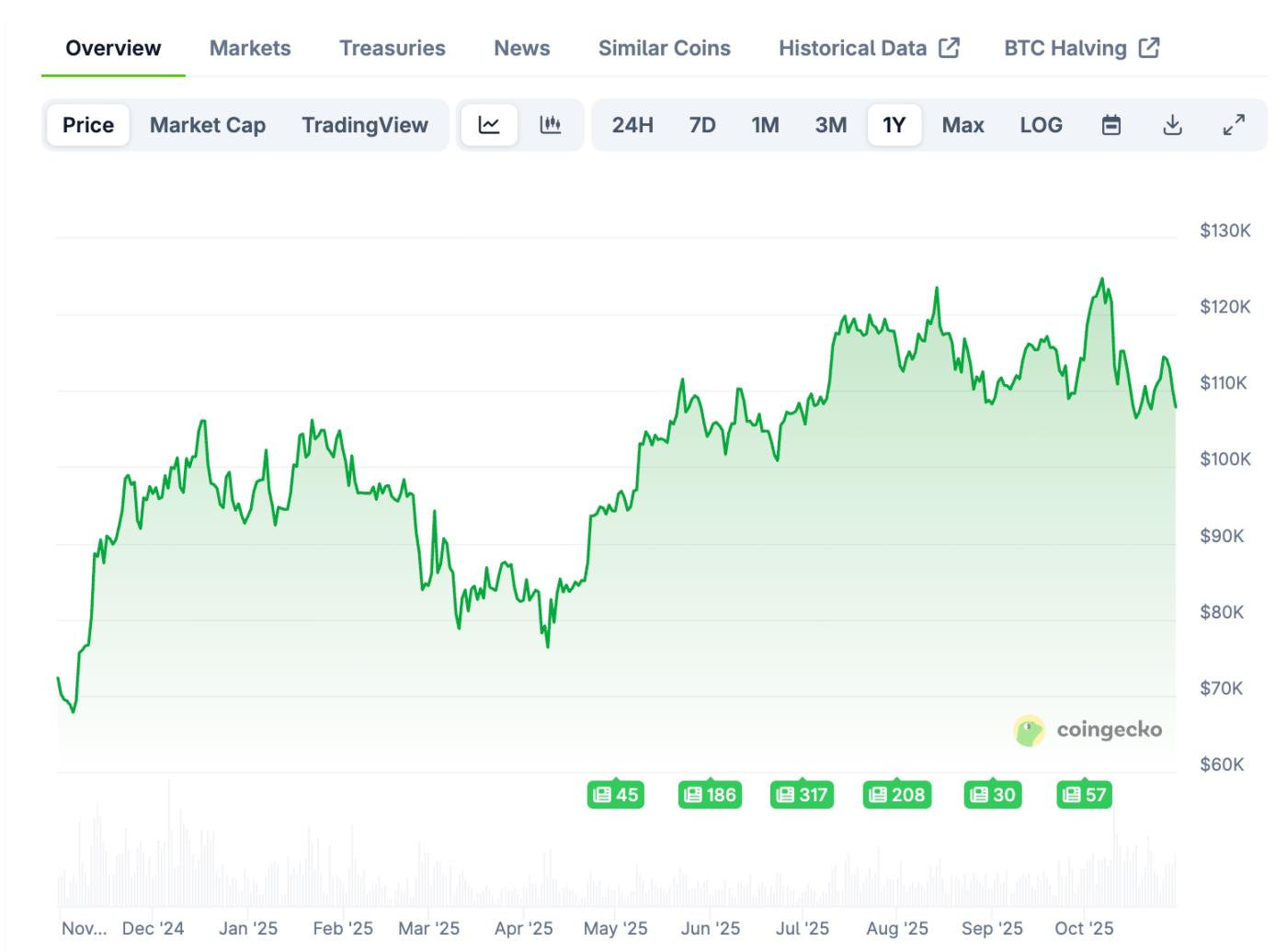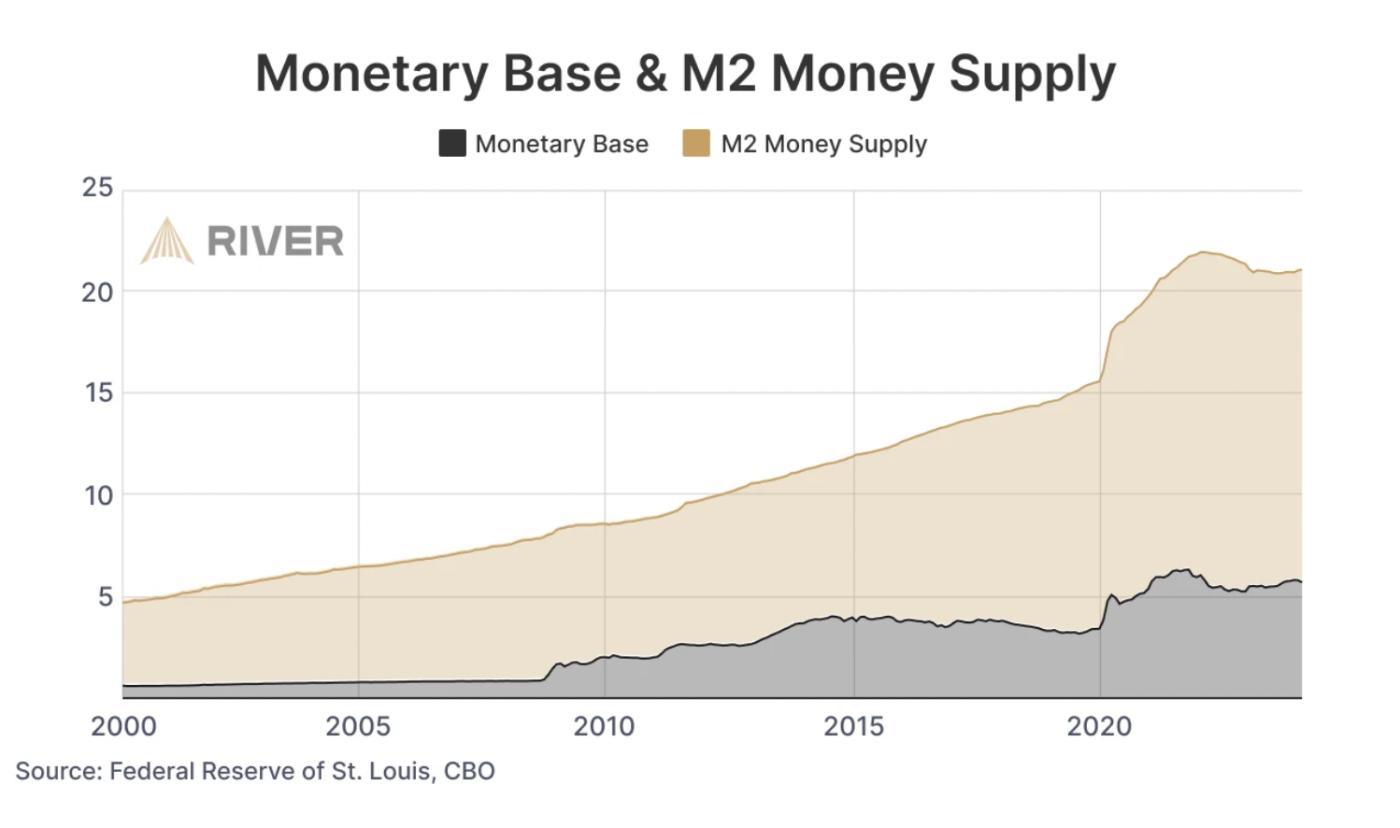The phrase “debasement trade” is becoming popular as a narrative in crypto. The idea is to move out of government-backed assets like bonds or fiat currencies, and into “hard” assets like gold or Bitcoin.
Matt Hougan, CIO of Bitwise, recently posted on X that the debasement trade theory is gaining popularity and will continue to be popular until 2026. So what is this theory, and why is it of interest now?
What is the trading theory based on currency devaluation in Bitcoin
The Debasement Trade theory with Bitcoin refers to investors buying Bitcoin to hedge against the decline in the value of fiat currencies.
As governments expand the money supply through debt and stimulus packages, each unit of currency loses purchasing power. This process is called currency debasement.
Bitcoin's fixed supply of 21 million coins and its independence from central banks make it an attractive hedge against the erosion of purchasing power.
In this perspective, Bitcoin acts as a “digital hard asset,” similar to gold, helping to preserve value when confidence in traditional currencies wanes.
This strategy is accelerating amid rising global debt and lingering inflation concerns, allowing investors to view Bitcoin as part of a broader strategy to protect assets against currency dilution.
Increased uncertainty
Satoshi Nakamoto created Bitcoin in response to the 2008 financial crisis. The genesis block when the network launched in 2009 also contained a message referencing bank bailouts.
So, while the identity of Bitcoin's founder remains a mystery, there is no doubt that the currency was born as a "soothing balm" to the chaos of traditional finance.
“I think the core thesis of BTC has always been a variation of the debasement trade,” said Andrew Tu, head of crypto market maker Efficient Frontier. “Starting from the genesis block where Satoshi talked about bailing out the banks.”
 Bitcoin price over the past year. Source: CoinGecko
Bitcoin price over the past year. Source: CoinGeckoIn general, financial markets react very strongly to US policy . So under the Trump administration, markets seem to reverse suddenly or on impulse.
The recent market crash on October 10th due to tariff concerns is a case in point, but the subsequent recovery has been almost as swift.
In fact, looking at the broader picture, Bitcoin's price has increased by 50% over the past year, despite its volatile week-to-week fluctuations.
Currency Devaluation: Bullish or Bearish for Crypto Traders?
The term “debasement” sounds serious, like something market participants need to be mindful of.
However, it could also be just a story to explain volatile markets, often influenced by the whims of US policymakers or other global events.
Daily market Watcher may have a different view on debasement, given the general cautious or pessimistic sentiment.
“Despite all the uncertainty and economists saying a recession and/or bear market is extremely likely in 2023, very likely in 2024, and 50/50 in 2025,” said Jeff Emrby, Managing Partner of Globe 3 Capital. “It’s a little early to say, but we expect to call for another bull market year in 2026.”
If the idea of debasement trade becomes a hot topic by 2026 as Hougan (Bitwise) predicts, early Bitcoin believers won't be surprised.
This used to be associated with “libertarian” or “cypherpunk”. It wasn’t really trendy at the time and was part of the Bitcoin counterculture until around 2016. Maybe it’s trendy now.
“That’s pretty much the foundation of the Bitcoin value story,” said Witold Smieszek, Chief Investment Officer at Paramount Digital. “So for the ‘older generation’ coming into crypto from a combination of economics and cypherpunk values, this is nothing new.”
Bitcoin Circulation
Potential investors in crypto now have far more options than in the cypherpunk days when it was almost exclusively Bitcoin.
The popularity of Layer-1s and more favorable regulatory frameworks have led to businesses looking at different chains, which could lead to significant value increases for the underlying Token .
But Bitcoin is still likely the name that best fits the debasement story.
“BTC with its hard cap has always been XEM by the Bitcoiner community as a hedge against the current fiat system,” said Efficient Frontier’s Tu.
 Federal Reserve calculations of total money supply over the past 25 years. Source: River Financial
Federal Reserve calculations of total money supply over the past 25 years. Source: River FinancialSince the 2020 pandemic-era money printing spree, total M2 money supply — cash and cash equivalents — has increased from about $15 trillion to more than $20 trillion.
Cheap and accessible money has driven money into Bitcoin and pushed prices up – BTC dipped as low as $4,000 during the 2020 lockdown. But that doesn’t mean there won’t be cash outflows when other macro events occur.
The volatility may be uncomfortable for less experienced cryptocurrency holders, but it is very beneficial for traders, as daily Bitcoin volume on exchanges reaches $17 billion, according to data aggregator Newhedge .
“If the market crashes because the AI bubble bursts or for some other reason, we will probably still see BTC and the entire crypto market — and possibly gold — also crash in the short term, before outperforming in the medium term,” Andrew Tu from Efficient Frontier added.







